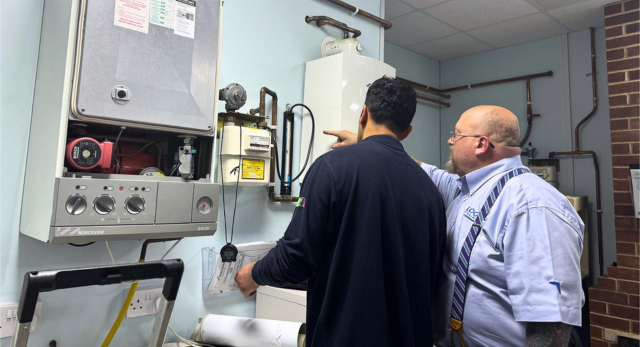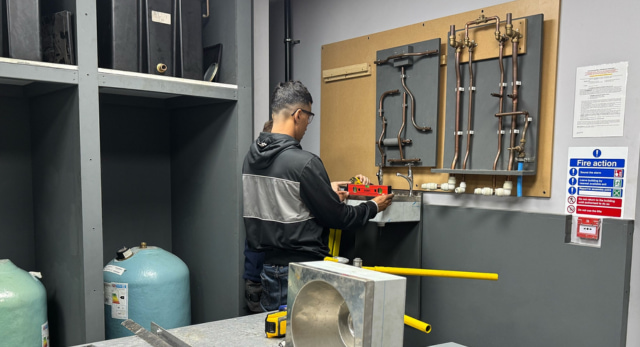From July 2015, the Gas Industry Unsafe Situations Procedure (GIUSP) is changing. This change comes after a long and drawn out review which began in 2010 after the death of Katie Haines from of CO poisoning.
What is GIUSP?
A single message of Danger Do Not Use is coming in and is primarily to help customers understand when an appliance must not be used.
Why Have These Changes Come into Effect?
This change comes after a long and drawn out review which began in 2010 after the death of Katie Haines from of CO poisoning.
Mrs Haines’ boiler had been checked a few months prior to the incident and was classified “At Risk”. It was decided that “At Risk” does not give a clear enough message to consumers that the appliance is dangerous and should not be used.
The coroner at the inquest into Mrs Haines death challenged the gas industry to re-examine the categories of risk applied to gas appliances so that consumers would understand more easily the levels of danger they might face.
“If there was any risk, then the gas appliance should be condemned.”
It was also noted that the appliance and its flue/ventilation had been correctly classified as AR. However a change in weather conditions caused the situation to become ID despite the fact that nothing within the appliance, flue or ventilation had changed.
This emphasised that AR situations could have the potential to become ID – the only unknown being when this might occur.
For that reason, the Coroner raised concern over the way the AR classification was communicated to the gas user or responsible person by a competent engineer. He said gas users and responsible persons must understand the reasons why their installation or appliance must not be used – and the potential consequences of not following this advice.
The Results of the Review
The GIUSP Working group decided that clarity was top priority. They wanted a simple message that left no room for error – “Danger Do Not Use” is the resulting message.
It provides a means for engineers to fulfil the requirements placed upon them by the Gas Safety (Installation and Use) regulations 1998 to notify or inform responsible persons and owners of premises/appliances of safety defects and dangers.
Although there is a common message for the gas user/responsible person for ID and AR situations, the actions for the gas engineer remain unchanged, that is to:
- Seek permission to turn off for both AR and ID situations
- For ID situations to call the Emergency Service Providers (ESP), or gas supplier for LPG, if permission to disconnect is not given.
To enable both gas users and gas engineers to focus on the key safety message, the Not to Current Standards (NCS) category has been removed from the procedure because, by definition, these situations are not unsafe. As a registered business, you may still record NCS situations, but this no longer forms part of the official Unsafe Situations Procedure.
This decision was taken after consulting with HSE behavioural safety experts. They confirmed that such notifications detracted from, diluted and confused the safety message and often led to situations where no action would be taken by the gas user.
How Will Gas Engineers Identify This?
A gas user is unlikely to move a boiler 50mm to the left so that its flue/chimney termination complies with the latest standard. Gas engineers can inform gas users of situations where improvements can be made using the “best advice” protocol in the same way that they would do for system improvements and boiler exchanges, etc. However this should no longer be done as part of any unsafe situation warning or notification process, and nor can installation work be carries out that does not meet manufacturers installation instructions or normative standards.
In certain circumstances, suppliers or transporters of gas must be notified or informed of safety defects and dangers. The procedure identifies situations where ESPs are likely to use their powers of entry (granted under the Gas Safety (Rights of Entry) Regulations 1996) if permission is not given for the engineer to make the installation safe.
In addition, the “Concern for Safety” category used by ESPs when investigating some reports of fumes/CO has been removed from the procedure. Actions taken by the ESP can be covered by AR process, removing any potential misunderstanding and strengthening the safety message.
What does Danger Do Not Use Mean?
For gas engineers, these situations still fall into two existing categories (ID and AR).
There are occasions when the actions of the gas engineer on site will not improve the safety of an AR situation. The working group has identified examples, eg, a built-over PE gas service pipe, within the procedure, which explains how to deal with them. In these situations, there is no safety benefit to turning off the gas, or attaching a Danger Do Not Use label. This follows the rationale used in GIUSP version 6 for ECVs without access.
In these situations, the gas engineer should explain why installation is AR and why turning off the gas supply to the appliance or installation will not reduce the risk. Although a Danger Do Not Use label is not attached, a warning notice should be issued, emphasising who the gas user or responsible person should contact to have the situation risk-assessed and where deemed necessary, rectified.
For all other ID and AR situations, the existing actions of disconnection or turning off with the customer’s permission shall be used. In these instances, the major change when compared with the previous GIUSP is the new Danger Do Not Use warning label.
GIUSP and Risk Assessments
GIUSP provides extensive guidance on identifying unsafe gas situations, but it is impossible to cover each and every situation.
Where the situation is not specifically covered in GIUSP, a risk classification process should be applied using your own professional judgement of each situation on its own merits to identify the appropriate category.
Version 7 of GIUSP is now available, replacing Version 6. You can download GIUSP free by logging into your online account at www.gassaferegister.co.uk/sign-in/








